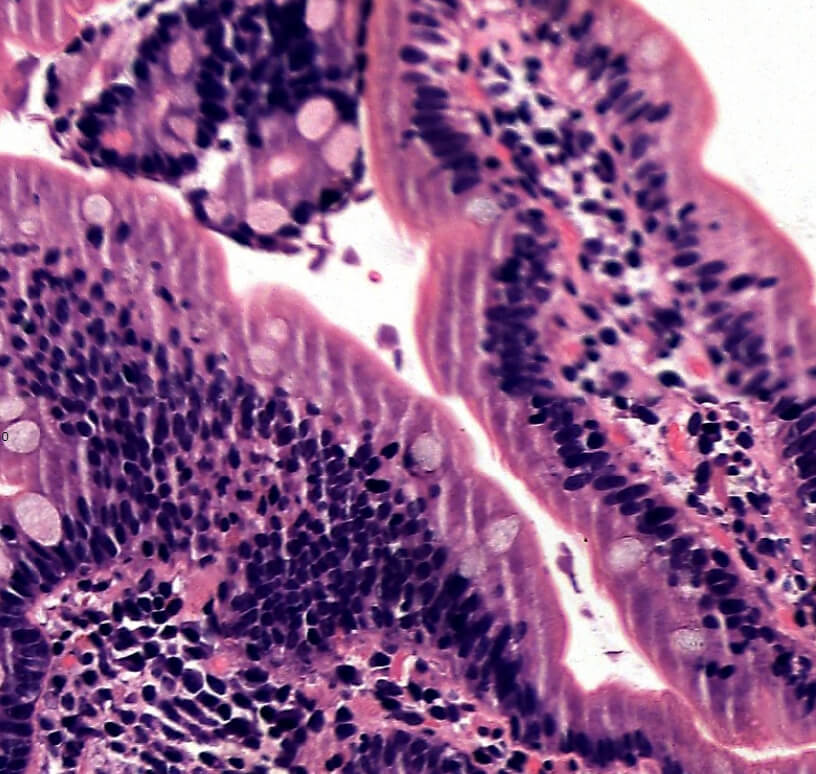Year
An 8-month-old boy from a peri-urban slum presented with frequent, loose and watery stools (6-7 episodes per day) for the past 2 months. His mother mentioned that he was fed formula and cow’s milk and was recently introduced to solids. On examination, he was stunted but otherwise healthy. A provisional diagnosis of persistent diarrhoea was made, and the child was evaluated with endoscopy.
Biopsy showed the following findings.
- What is your diagnosis?
- What are the clinical features?
- What is the treatment of choice?

Answer
- What is your diagnosis?
Chronic giardiasis. Duodenal mucosa showing trophozoites of Giardia lamblia. These are 10-15um in length and 5-15um in width and pear-shaped seen adherent to the mucosal surface. Mild villous blunting and increased inflammatory cells are seen in lamina propria. - What are the clinical features?
In early childhood, subclinical infections as well as symptomatic infections with acute or chronic diarrhoea can lead to malnutrition and deficits in cognition. Acute or chronic diarrhea (with foul-smelling, greasy, floating stools — steatorrhea) is usually accompanied by abdominal cramps, bloating, flatulence, nausea, and vomiting. - What is the treatment of choice?
Metronidazole- 15 mg/kg/day in divided doses for 5–7 days or Tinidazole – 2 g single oral dose (preferred for better compliance) or Nitazoxanide- 500 mg twice daily for 3 days. A lactose-free diet is advised until symptoms resolve, along with oral rehydration and nutritional supplementation.

